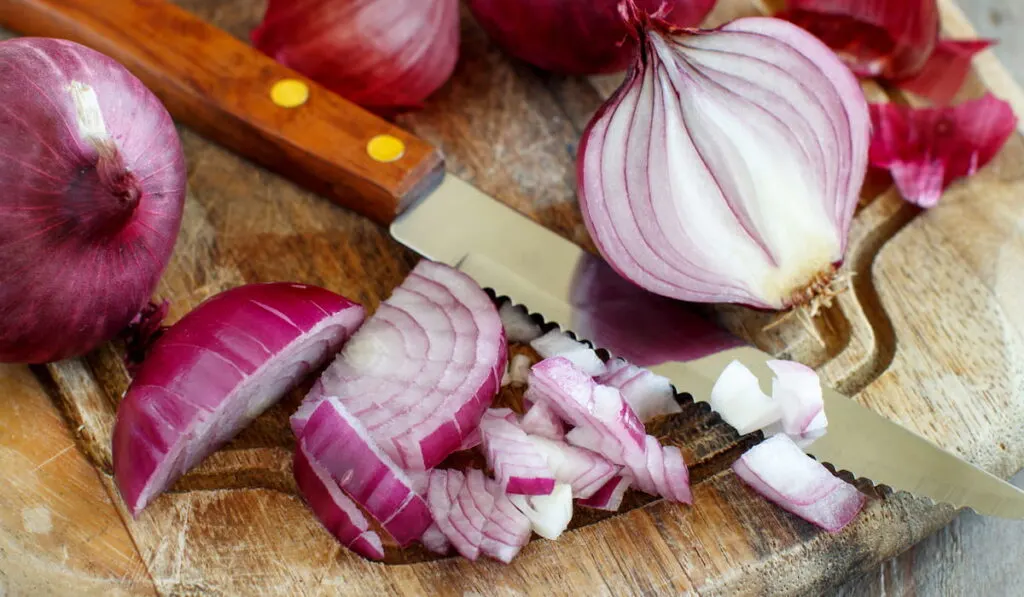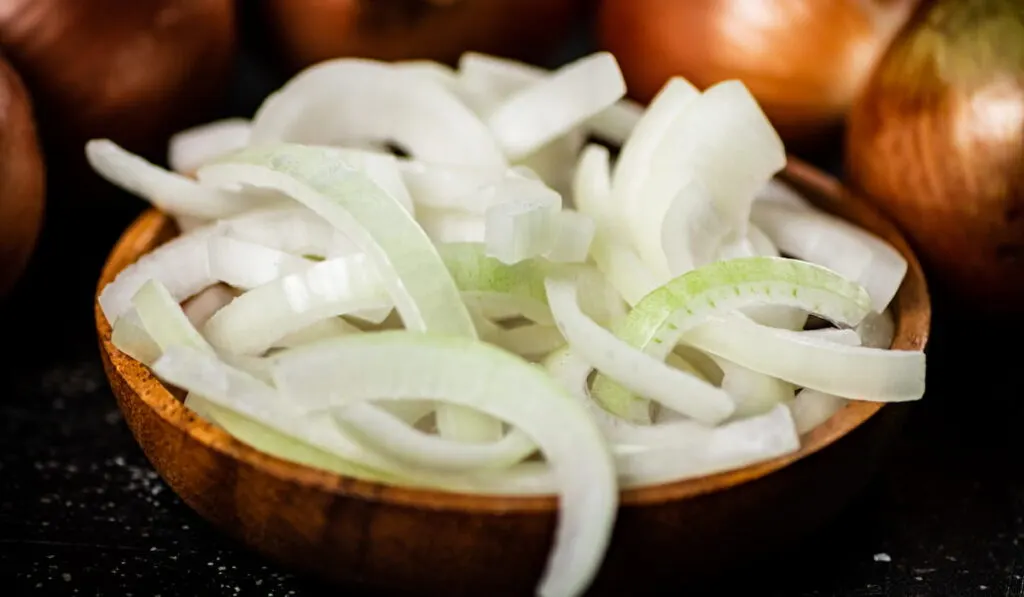No dish is complete without onions. Their unique and distinct flavor adds taste to any food whether it’s soups, sandwiches, or baked products. But have you ever wondered why some chefs prefer a specific type of onion for a particular dish?
There are different types of onions with the most common ones being red and white onions. These onions differ in terms of color, texture, and flavor.
In this detailed guide, we cover some of the major differences between red and white onions based on their flavor, use, size, and more.

Table of Contents
Red Onion
Red onions belong to Allium cepa, a genus of onion. These onions have a reddish-purple color on the outside, and the inner is mostly white with a purple outline.
These onions are available in different sizes of small, medium, or large. Red onions can be consumed in various ways whether caramelized, sizzled, or raw.
White Onion
White onions are more pungent and strong. They belong to the dry onions family.
These onions are white from the inside and outside, with a thin outer skin. Most cuisines from Europe and Mexico use white onions in their cuisines.
Although white onions are similar to yellow onions, they have a different, sweeter flavor. Nonetheless, you can substitute them for yellow onions while cooking.
Differences Between Red and White Onions
Some of the factors that differentiate red and white onions are:
Size and Appearance
Red onions have bright, maroon flesh with papery skin. Their size can be similar to a golf ball, with some resembling a softball, based on where they are grown.
White onions are plain white, but some may have an off-white tint.
Unlike red onions which have a crunchy and crusty texture, white onions have a lighter texture. Moreover, white onions are slightly smaller compared to red onions.

Flavor
Red onions can be caramelized, stir-fried, sautéed, and simmered.
When cooked, red onions lose some of their flavors unlike when consumed raw. Furthermore, red onions add a distinct flavor to a dish when cooked compared to when eaten raw. These onions have a mild flavor and add color to a dish depending on how long the onions cook.
Browning the red onions tuns the white and purple circles to red-brown, which shows that they’re ready for the next stage.
Allowing the red onion to sweat gives it a translucent purple color, while frying the onions turns them red-brown.
Use
Red Onions
Most Asian and European countries prefer red onions due to their distinct flavor and bright colors. Asian countries prefer them when making traditional curries.
Red onions are mainly used for salads, roasted meats, and sandwiches. These onions are also commonly used for pickling as the color diffuses throughout the cut onions, giving them a bright magenta color.
Pickled red onions make a perfect condiment for when you want to add that distinct flavor and color to your dishes.
Soak red onions in cold water to remove some of that sharp flavor to enjoy them raw in salads. Red onions are also a favorite when grilling. Simply cut the onion into wedges and char them on the grill for a crunch interior texture on your steaks and burgers.
Balsamic roasted red onions are popular and are used as a simple side dish or as a topping on salads and sandwiches.
White Onions
White onions have a strong flavor and are mainly used in general cooking and flavorful salads. Central American and Latin dishes mainly use white onions as a garnish or to add some freshness to foods like enchiladas and tacos.
White onions are found in most Mexican and French delicacies. For example, French onion soup uses white onions.
This onion is great for guacamole and salsa. White onions have a crisp texture and flavor in these preparations.
You can also prepare your burgers or sandwiches with white onions.
It’s best to soak sliced white onions in water for at least 30 minutes to remove the pungent onion smell and enjoy the sweet crunch.

Color
Both the white and red onions have the flavonoid quercetin. The concentration of this flavonoid is more in the outer, dry layers compared to the inner layers of the onion.
Research by the National Onion Association shows that the red onion has high amounts of quercetin, which makes it more colorful than the white onion.
Final Thoughts
Although the white and red onions may differ in terms of their colors, they also vary in terms of their use, texture, and flavor.
Red onions are commonly used in pickling, grilling, or salads, while white onions are preferred in general cooking, sandwiches, or salads.
You need to decide the type of onion to use depending on the flavor and color you’re looking to achieve.
